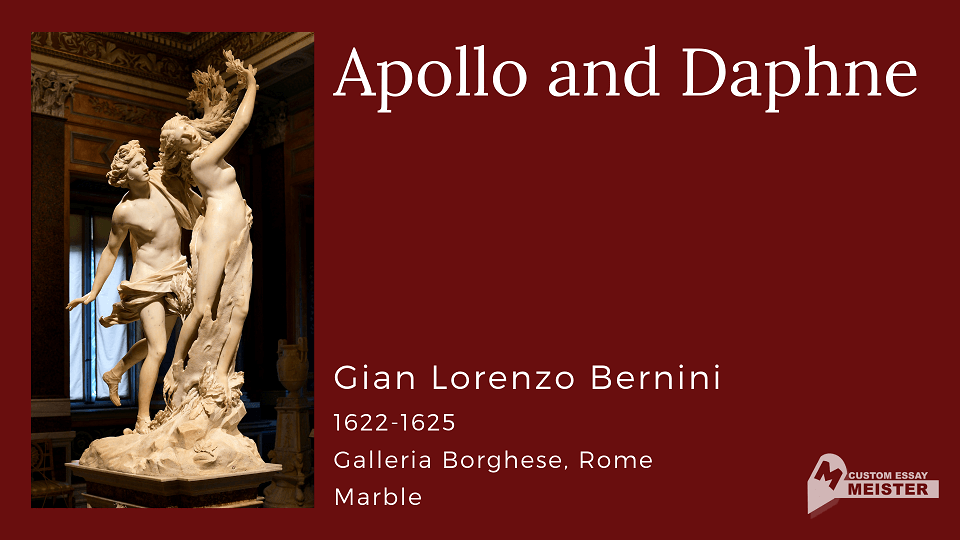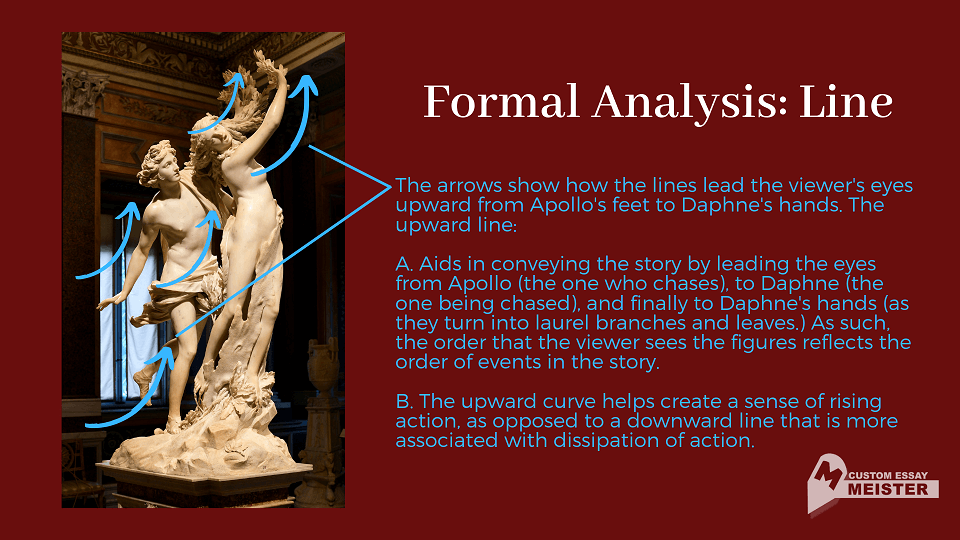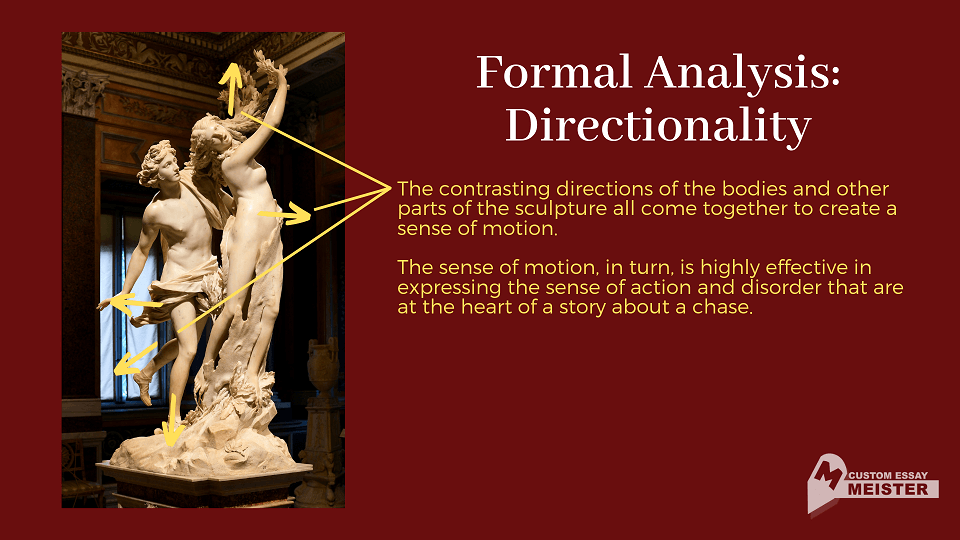How to Write a Formal Art Analysis
When people hear the word “art,” many think of works found in museums and galleries. But art is more than just what people find in exhibits; it is in the films and shows people watch, in the advertisements that call their attention every day, and in public spaces like parks and squares. Art is an important and indeed even essential part of life. One way to enhance the enjoyment of art is by learning how to analyze artworks.
Many students are often intimidated and confused by art analysis. Some students, for instance, think of art analysis as explaining what is art. Others think that art analysis involves writing a descriptive essay about an artwork. Although art analysis does involve describing a work of art and presenting an opinion, it goes beyond these. Art analysis involves examining the visual elements of an artwork to determine how these elements elicit a response from the viewer.
What Is Art Analysis?
As the term itself suggests, art analysis is the process of analyzing an artwork. There are different types of art analysis, and one of the most common types is formal analysis. Formal analysis is the examination of the “form” of the artwork, meaning its visual elements. Just as there are elements of a short story, there are also elements of art . These elements are those characteristics that you can observe with your own eyes. When looking at these elements, try to ask yourself some questions. These elements include:
- Color . This refers to the colors that you can see. What are these colors? Are they bright, dark, intense, dull, warm, or cold? Do the colors contrast each other or do they look like they belong to the same part of the color wheel?
- Composition . This refers to the arrangement of figures or objects. Are they arranged in an orderly manner? Or are they chaotic? Are some of the figures or objects bigger than the others? Are they closer or farther?
- Line . Line pertains to actual lines that you can see as well as lines that are suggested by figures and objects. For example, a pillar may serve as an actual line while the limbs of a tree can be considered as suggested lines. What lines do you see? Are they straight or are they curved? Where do these lines point to or lead you?
- Shape . Like lines, artworks also feature actual and suggested shapes. What shapes do you see? Are they geometric or are they irregular?
- Texture . Texture refers to the characteristics of surfaces. Do you see soft textures? How about hard ones? Are the surfaces smooth or rough?
- Space . Space refers to both the objects and figures that you see as well as the vacant spaces that surround them. For example, the figures of a man and a woman are positive space, while the space between them is negative space. Does the work involve a lot of positive space? Or do you see a lot of negative space? Is it crowded or is it spacious?
- Light and shadow . These elements refer to the way a work presents light. Is the work bright? Or is it dark? Is there a sharp contrast between light and shadow? Which direction is the light coming from?
Apart from looking at elements, you can also look at the principles of design . Principles of design refer to the way the artwork is conceptualized. These also refer to the effects that are created using the elements. The main principles that can be observed are balance, proportion, and movement. Again, ask yourself some questions when you look at these.
- Balance . Balance refers to how weight is distributed in an artwork. Does the artwork feel like it is heavier on one side or is the weight equally distributed? Do you see symmetry in the way the figures are arranged?
- Proportion . Proportion pertains to the size and weight of figures and objects in relation to each other. Are the proportions realistic? Or are some figures given more emphasis by making them larger and heavier?
- Movement . Movement refers to the sense of motion that you get, which is often suggested by lines. For example, a billowing flag might suggest blowing winds. Does it feel like the figures and objects are moving? Or do they look static? Does the artwork make you feel like it is packed with energy or does it make you sluggish?
These are just some of the elements and principles that you can consider when analyzing a work of art. Remember that formal analysis is all about visual characteristics. You are not being asked what you think is the message of the work; you are being asked to convey how elements and principles make you feel or what effect they have on you as the viewer.
Writing the Formal Analysis
Note that not all elements and principles apply to an artwork. Most of the time, you will be able to look at only a few of these. In fact, it will be better if you focus only on the most important visual characteristics since this will help you create a narrow claim that you can defend better. Analyzing too many visual characteristics at once risks making your paper incoherent and confusing. With that being said, following the steps below can help you write a good essay.
- Examine the artwork . In writing the formal analysis, the first thing you need to do is examine the individual elements and principles. Look at the artwork carefully. Identify the formal elements that you can see. Ask yourself questions. What characteristics stand out for you? How would you describe the colors? How would you describe the lines?
- Think about the artwork’s effect on you . Once you have identified the most important elements, think about how they affect the work and you as the viewer. Does the composition look balanced or unbalanced? Does it make you feel calm or anxious? How do the figures draw your gaze? How do the elements make you feel? What do you think the artist wants you to feel?
- Write your thesis statement . Once you have thoroughly examined the work and thought about the elements’ effects on you, you can proceed to formulate a cohesive thesis statement. Remember that you need to know how to write a good thesis statement in order to make the thesis concise and representative of your main claim.
- Expand your thesis . Once you have formulated your thesis, proceed to expand your claim by explaining how the elements and principles you identified create effects that you can perceive or feel as a viewer. You can do this by discussing each element and principle first and then tying them all together at the end.
- Write your conclusion . As always, make sure you cap your paper with a well-written concluding paragraph. Summarize what you discussed and then offer final thoughts to the reader.
One helpful tip in writing formal analysis is to think of it as somewhat similar to a cause and effect essay.
Note : The elements and the principles are the causes, while the way they affect the artwork and make you feel are the effects.
Your job, therefore, is to explain the relationship between the artwork’s characteristics and its effect. Having an idea of how to write a cause and effect essay will help you with this assignment.
Applying the Process: Gianlorenzo Bernini’s Apollo and Daphne
To understand formal analysis better, let us take a look at an example. Below is a marble sculpture titled Apollo and Daphne by the Italian artist Gianlorenzo Bernini. The sculpture depicts the moment the nymph Daphne turns into a laurel tree in order to escape the god Apollo who has become enamored with her.

Now, there are various characteristics that can be considered here, but the most prominent one is the use of line and directionality. These characteristics allow the viewer to not only fully appreciate the narrative that the artwork presents but also give the work the sense of chaotic and dynamic movement that is inherent to the story itself.
Lines Conveys the Story and Creates Rising Action
Firstly, one of the more noticeable things about the sculpture is how most of the lines form a curve that leads the eyes from the bottom left (Apollo’s feet) to the upper right (Daphne’s hands). The lines are smooth, sinuous, and delicate. But what the lines accomplish is the successful retelling of the story. According to the myth, Apollo was chasing after Daphne when the latter prayed to her father, a river god, to save her. She then became a tree just before Apollo caught up with him.
The ascending curve that the lines make enables the viewer to see Apollo first, followed by the human Daphne, and ultimately the first parts of Daphne to turn into a tree. The lines, therefore, help tell the story in chronological order because we see (a) Apollo chasing Daphne, (b) Daphne running from him, and (c) Daphne turning into a tree. Furthermore, the upward curve helps create a sense of rising action, as opposed to a downward line that is more associated with falling action.

Direction Conveys Movement
Secondly, the directionality of the work also helps in conveying movement. Notice how Apollo’s right leg is resting on the ground and slightly bent as if it is absorbing the weight of his body. His left leg, on the other hand, is behind him and hanging mid-air. Apollo’s weight is therefore unequally distributed as he assumes the position of someone running, and this creates the feeling that he is moving.
Similarly, Daphne’s center of gravity is odd despite assuming a more static position. She seems to tilt forward, and the only thing preventing her from tipping is the tree bark that covers her legs. On the top, Daphne’s hair spreads out as if she has suddenly turned her head. And finally, Apollo’s wrap billows behind him. The contrasting directions of the bodies and other parts of the sculpture all come together to create a sense of motion, which in turn lends the work a sense of action and disorder.

Tip for Writing About Art
While the above is a partial sample of formal analysis, it should give you some insight into how to conduct a formal analysis. Writing about art is not that simple, but the process gets easier once you learn the basics of art analysis. Examining the elements of art as well as the principles of design will serve as your building blocks. Over time, you will become adept at not only describing art but also understanding how it creates the effect it has on you.